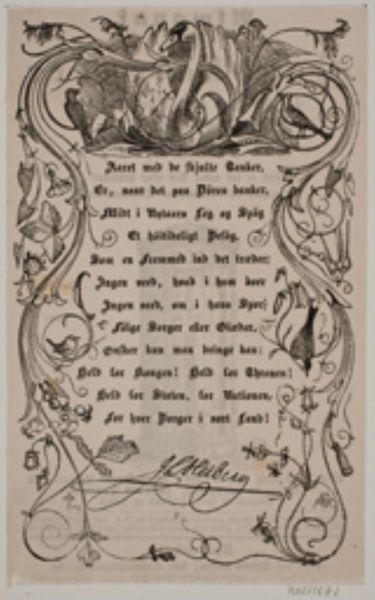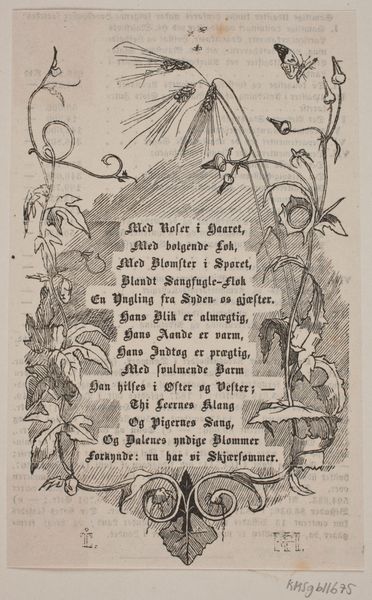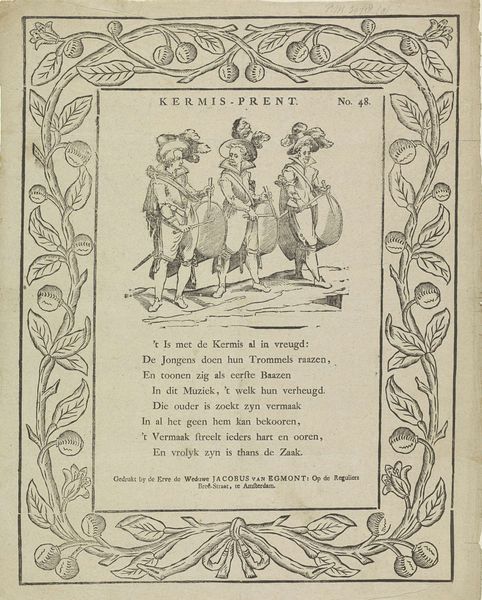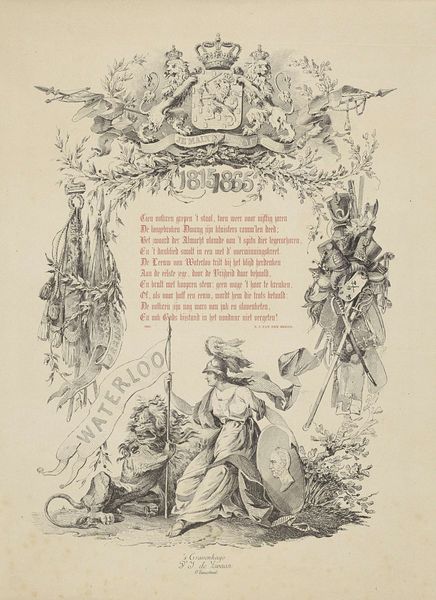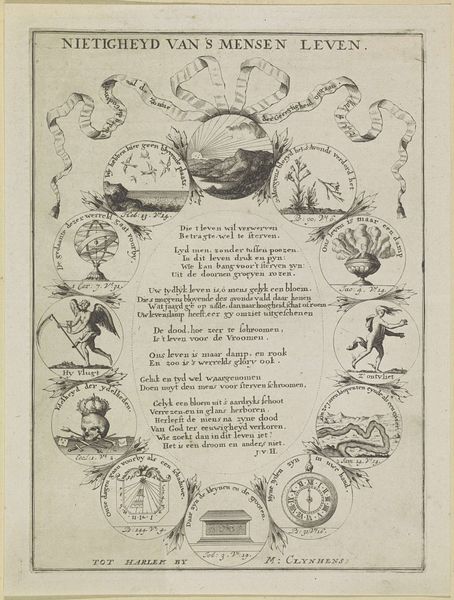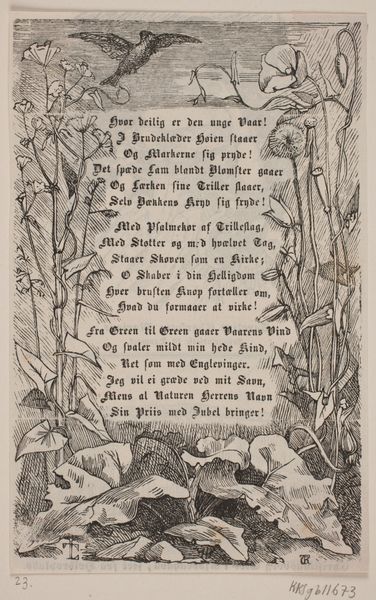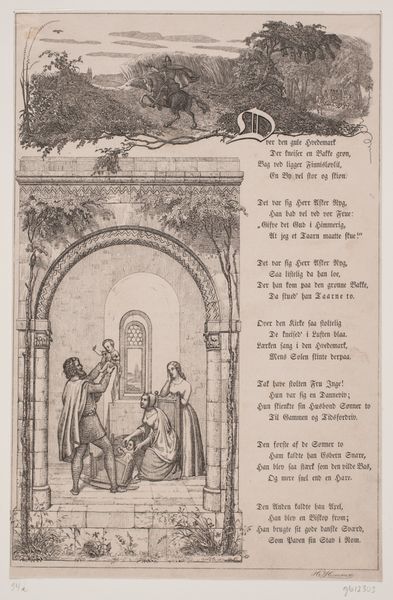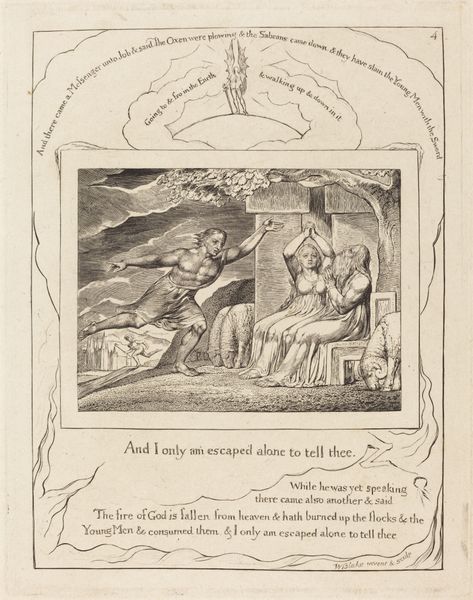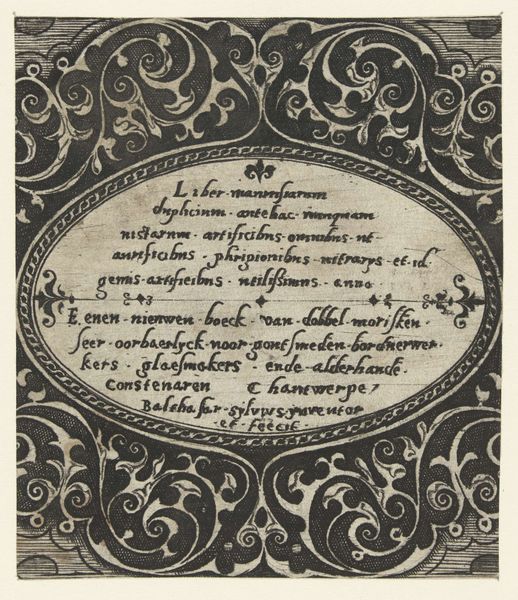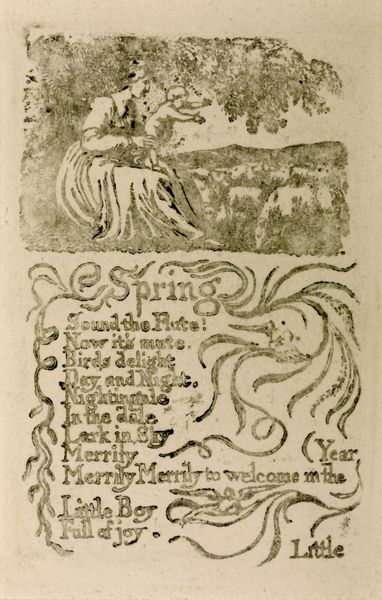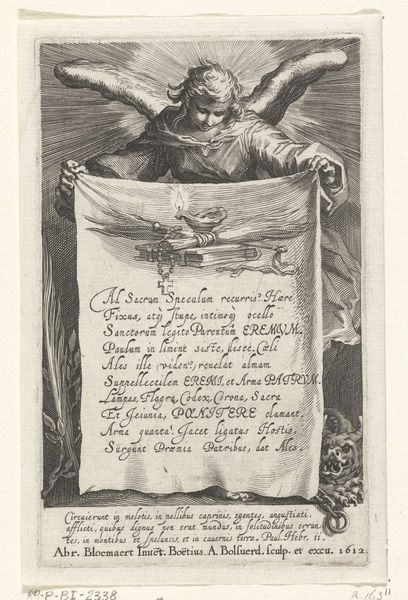
Illustration til "Halvhundrede Fabler for Børn" af Hey 1834
0:00
0:00
drawing, print, ink, engraving
#
drawing
# print
#
landscape
#
ink
#
engraving
#
miniature
Dimensions: 259 mm (height) x 144 mm (width) (bladmaal), 203 mm (height) x 130 mm (width) (plademaal)
Editor: This is "Illustration til "Halvhundrede Fabler for Børn" af Hey" created in 1834 by Martinus Rørbye, using ink and engraving for the drawing and print. It’s incredibly detailed for such a miniature piece! What I find most striking is the way the animals seem to frame the text. How do you interpret this work? Curator: This piece is a fascinating glimpse into the 19th-century cultural construction of childhood and morality. Rørbye's choice of a fable illustration is no accident. Fables, particularly those marketed toward children, served as powerful tools for instilling societal values. The animals are not merely decorative; they are characters embodying virtues and vices, participating in a visual pedagogy. Editor: So, the animals aren't just cute drawings for kids? Curator: Precisely! Consider the context: 1834 was a time of significant social upheaval and shifting power dynamics. The rising middle class was eager to define its own values, and children’s literature became a battleground for shaping the next generation. The positioning of the animals, almost literally "holding" the narrative, speaks to their active role in this moral instruction. Does the specific selection of animals spark any thoughts for you? Editor: I guess the bull at the center does feel important. Curator: Yes, think about the symbolism of a bull. Strength, stubbornness, maybe even a little foolishness? How might that contrast with, say, the cleverness associated with the monkey at the top left? This composition asks us to consider these contrasting traits and, by extension, what behaviors are encouraged or discouraged. Editor: I never thought about children’s illustrations being so intentional. I guess I learned that art, even for kids, reflects larger societal issues. Curator: Absolutely! And recognizing those influences helps us understand both the art and the world that created it.
Comments
No comments
Be the first to comment and join the conversation on the ultimate creative platform.
